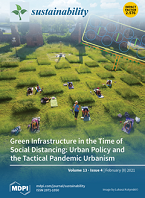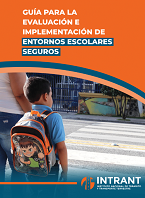-

“Not as safe as I believed”: Differences in perceived and self-reported cycling behavior between riders and non-riders
Sergio Useche, Javier Gené-Morales, Félix Siebert, Francisco Alonso, Luis Montoro
(2021). ArticleSustainability. Num.13(4), 1614
Cycling behavior remains a key issue for explaining several traffic causalities occurring every day. However, recent studies have shown how the assessment of the own safety-related behaviors on the road may substantially differ from how third parties assess them. Thus, the aim of this study was to evaluate the differences between cyclists’ self-reported behavior and the proxyreported behavior that other (non-cyclist) road users perceive from bike riders. For this purpose, this study used data from two samples: (i) 1064 cyclists (M = 32.83 years) answering the Cycling Behavior Questionnaire—CBQ, and (ii) 1070 non-cyclists (M = 30.83 years) answering an adapted version of the CBQ for external...
Cycling behavior remains a key issue for explaining several traffic causalities occurring every day. However, recent studies have shown how the assessment of the own safety-related behaviors on the road may substantially differ from how third parties assess them. Thus, the aim of this study was to evaluate the differences between cyclists’ self-reported behavior and the proxyreported behavior that other (non-cyclist) road users perceive from bike riders. For this purpose, this study used data from two samples: (i) 1064 cyclists (M = 32.83 years) answering the Cycling Behavior Questionnaire—CBQ, and (ii) 1070 non-cyclists (M = 30.83 years) answering an adapted version of the CBQ for external raters—ECBQ. The results show how the self-reported and proxy-reported behaviors of cyclists greatly differ in terms of all behavioral factors composing the CBQ model, i.e., traffic violations, riding errors, and positive behaviors. Also, external raters (non-cyclists) are those targeting significantly riskier behaviors than those self-reported by cyclists. These discrepancies between perceived behaviors may give rise to conflicting viewpoints on the interaction between bicycle riders and other road users. Therefore, this study underscores the importance of behavioral awareness, providing highlights for future studies on the behavioral interaction between cyclists and other road users. Results can be used to improve the road safety of all road users by giving indications on self-and proxy-perceived safety-related behaviors and visibility of protective riding habits.
Leer más Ocultar DOI: 10.3390/su13041614 -

Guía Metodológica para Entornos Escolares Seguros en República Dominicana
Revisores: Francisco Alonso, Jorge Suárez, José Luís Velarte
(2020). LlibreLa guía tiene el objetivo de adaptar el entorno escolar a las necesidades de niños, niñas y adolescentes, para así disminuir el riesgo en sus desplazamientos desde y hacia los centros educativos. De acuerdo a los datos nacionales consolidados por el Observatorio Permanente de Seguridad Vial (OPSEVI), para el año 2019, del total de fatalidades producidas por el tráfico, aproximadamente el 14% fueron niños, niñas y adolescentes menores de 20 años, es decir, fundamentalmente en edad escolar. La Guía de Evaluación e Implementación de Entornos Escolares Seguros, es un documento técnico que contiene la información necesaria y relevante para llevar a cabo un plan efectivo que obtenga resultados a...
La guía tiene el objetivo de adaptar el entorno escolar a las necesidades de niños, niñas y adolescentes, para así disminuir el riesgo en sus desplazamientos desde y hacia los centros educativos. De acuerdo a los datos nacionales consolidados por el Observatorio Permanente de Seguridad Vial (OPSEVI), para el año 2019, del total de fatalidades producidas por el tráfico, aproximadamente el 14% fueron niños, niñas y adolescentes menores de 20 años, es decir, fundamentalmente en edad escolar. La Guía de Evaluación e Implementación de Entornos Escolares Seguros, es un documento técnico que contiene la información necesaria y relevante para llevar a cabo un plan efectivo que obtenga resultados a corto plazo desde el momento de levantamiento de información hasta su posterior análisis en áreas circundantes a los recintos escolares, así como los trayectos utilizados por estudiantes, su comportamiento con relación a la movilidad vehicular y peatonal y su seguridad para el traslado de los estudiantes.
Leer más Ocultar ISBN: 978-9945-9238-9-6






